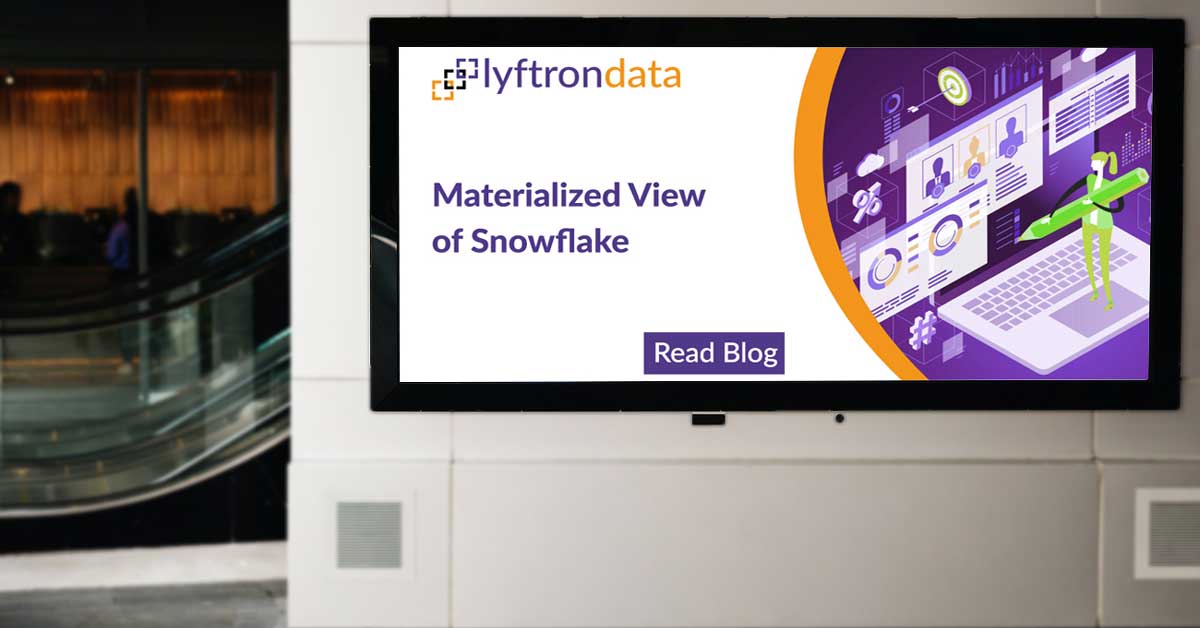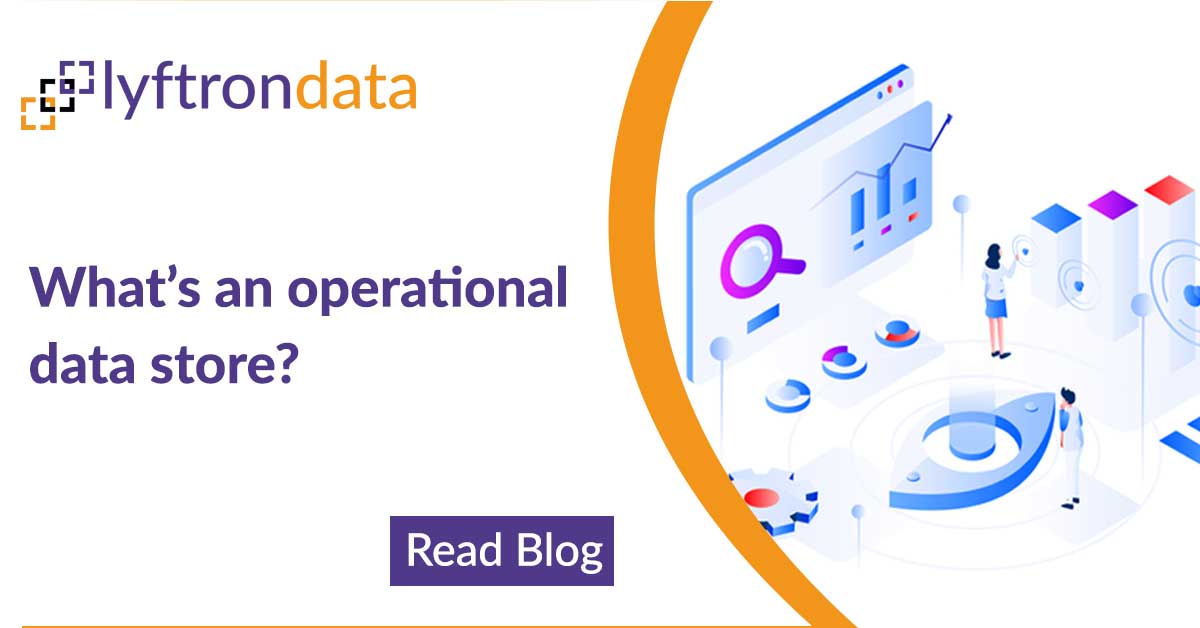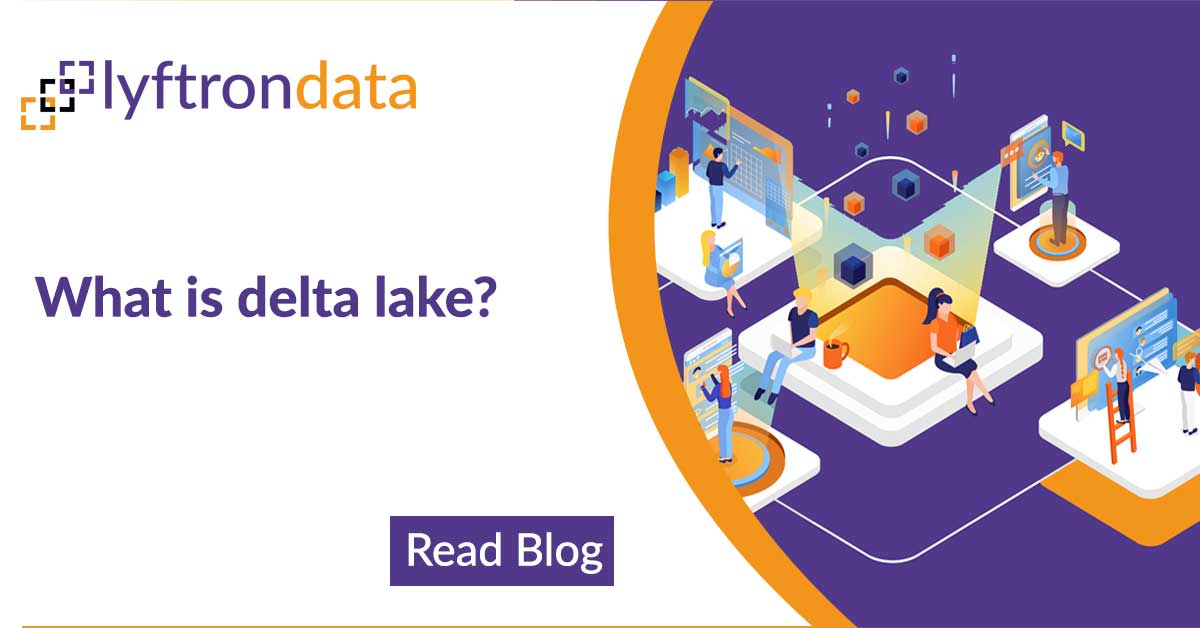Delta Lake is an open storage layer that brings reliability to data lakes. Read blog to know more!

An Overview of the Materialized View of Snowflake
Explore the Materialized View of Snowflake in detail. Read the blog to learn it in indepth.

Snowflake Data Exchange
Securely Transferring Sensitive Data Between Clouds Read the customer story of Lyftrondata and explore.
Delta Lake is an open storage layer that brings reliability to data lakes. By providing ACID transactions and data versioning, Delta Lake enables you to perform multiple reads, writes, and merges on tables with full confidence. Delta Lake is the first unified storage system capable of ingesting, consolidating, and managing structured and semi-structured (JSON) data with high performance for all your real-time machine learning and analytics use cases. Delta Lake helps save time by resolving issues such as duplicated data, incomplete updates, and corruption before they impact downstream applications. Delta Lake enables you to have a single source of truth for all of your enterprise data with its unified platform for batch and streaming workloads. Delta Lake integrates streaming & batch data processing while providing ACID transactions and scalable metadata handling.
The Delta Lake project is now an open-source project in the Linux Foundation and is the basis for a set of upcoming features in Databricks Runtime. Since Delta Lake was launched in October 2017, Delta Lake has been adopted by over 4,000 organizations and processes over two exabytes of data each month.
Stimulate your development efforts and time with the universal data modeling
Open and secure data sharing
The Delta Sharing platform enables your business to share sensitive data assets with suppliers, partners, and contractors while meeting security and compliance needs. With a simple interface, organizations can manage and audit shared data across partner organizations in the industry’s first open protocol for secure data sharing. The native integration with the Unity Catalog makes it easy to visualize, query, enrich and govern shared data from your tools of choice.
At-a-glance security and governance
Accelerate productivity by rapidly building and sharing data pipelines with Databricks Delta, a purpose-built, cloud-native technology for modern big data analytics. Delta Lake enables you to create and manage tables with data versioning and schema control that provides the ability to ship ACID transactions on top of Spark, making it both scalable and reliable. With native integration with Databricks, an optimized reader keeps your transaction log (ACID) small, manageable, and highly performant.
Faster queries
Better use of statistics is responsible for the majority of the performance gains. When compared to normal Parquet, Delta Lake has various features that can make the same query substantially faster. The transaction log not only keeps track of Parquet filenames, but it also collects statistics about them. The minimum and maximum values of each column in the Parquet file footers are listed here. As a result, files with no matching values for query predicates can be skipped, which is far faster than searching all of the files one by one and figuring out what they contain.
Problems solved by delta lake
One of the biggest issues with data lakes is that you have to be careful about reprocessing because it can destroy the results from previous queries and, sometimes, even corrupt your data. If a query fails or gets interrupted, using Delta Lake helps to prevent others downstream from seeing inconsistent results.
Delta Lake is fully compatible with Apache Spark APIs and runs on top of your existing data lake. When you store data in Delta Lake, you can use batch queries and stream processing jobs to query and analyze your data more efficiently in Spark. To help you optimize access to data, Delta Lake provides ACID transactions, scalable metadata handling, and unifies streaming and batch data processing.
Delta lake table
When Delta Lake writes data to an S3 location, it creates a new blob in the corresponding _delta_log directory, called a transaction log. The transaction log contains all the writes to the table (whether it is to a batch table or a streaming source) and therefore likely consists of many more files than the original data. The difference between the data directory and the transaction log is that the data directory is append-only and can be compacted. However, the transaction log is write-once but never compacted and therefore may contain duplicate or out-of-order entries as an artifact of how Spark Structured Streaming works under the hood.
Need of delta lake
Delta lake provides snapshot isolation, data versioning, and rollback functionality which enables concurrent reads writes, and updates, with consistent data. Delta allows file compaction in the background making it easy to run SQL queries alongside fast inserts. Additionally, all reads/writes are serializable, with Z-order partitioning providing better performance improvements.
Delta lake format?
In earlier versions of Spark SQL, data from data sources are row-oriented and serialized using a format like JSON or CSV. It is suitable for data stores that have simple structures and applications that do not require complex transformations. However, in many cases, the data has complex structures with nested fields or variable-length arrays. Serializing the data row-wise loses the structure that exists in the original dataset. Delta Lake 0.4.0 introduced a new table format (i.e., binary) which brings many novelties to improve performance and usability, e.g., richer schema operations, faster merging of small files, support for ACID transactions, etc.
Lyftrondata for delta lake
Reduce risk and experience a secured distribution of actionable intelligence to data owners. Lyftrondata not only helps you to stay in control of your data, but also empowers business analysts and consumers with modern, AI-powered, self-service analytics capabilities.
Lyftrondata supports a governed delta lake that acts as an anti-corruption layer, allows nested tagging by resource groups, and ensures effective and efficient use of data. Lyftrondata accepts a delta Lake as yet another data source that is registered in Lyftrondata. The validated tables from the delta Lake are tagged in Lyftrondata which is the portal to the delta Lake. All additional views of the source data are defined as views. New data sources are first evaluated in Lyftrondata before being loaded to the delta Lake.
Connect with our experts
Today to explore how Lyftrondata could help with data stack modernization with an agile, automatic columnar ELT pipeline and give you 95% faster performance.








